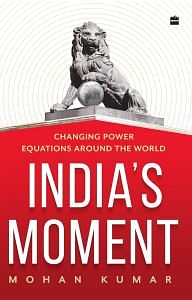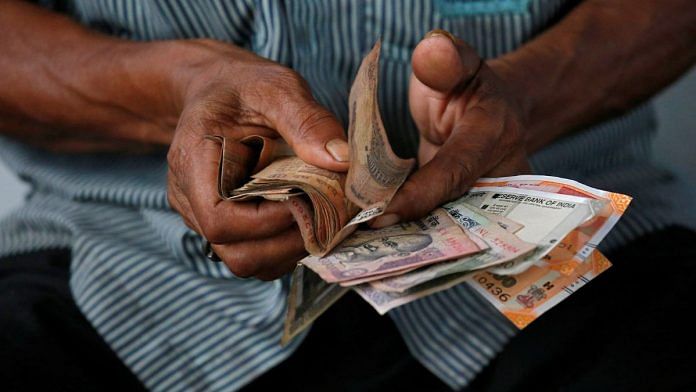It may therefore be seen that there is a method to India’s negotiating strategy. Several commentators have observed that India should improve its method and become a proper stakeholder in international negotiations. The point to be noted is that the method is not at fault here. So, if there is to be a change in India’s negotiating method, then, there must be a change in the fundamental factors undergirding India’s national interests. In this concluding chapter, we will look at how this might happen.
The Poverty Veto
The very first criterion in our framework, namely, the Gandhi Litmus Test is very hard for any elected government in India to ignore. After all, 500 million citizens living in poverty is not a trifling matter. I had earlier coined the expression ‘poverty veto’ to explain how this factor constrains India’s negotiating space. Whether it is the WTO negotiations, the climate negotiations or even the discussions surrounding the war in Ukraine, it is hard for any government in India to get around this issue. The only way, then, to mitigate the poverty veto in the future is for India to bring down this figure of 500 million to something like 100 to 150 million. That is a manageable figure for any government in India and would bestow on it enough margin for manoeuvre in international negotiations.
There is no magic wand to achieve this except for the Indian economy to grow to something in the range of $10 trillion and for the growth to be both inclusive and resilient. Two specific challenges must be overcome by India in this regard. First, the share of manufacturing in India’s GDP must hit at least 25 per cent, while at present it hovers around the 15 per cent mark. It is only manufacturing that can absorb the massive labour force that is currently dependent on agriculture, and which must be relocated as quickly as possible. Second, as a corollary, agriculture in India must be reformed, and reformed expeditiously. It was unfortunate that the eminently sensible farm bills proposed by the government in 2020 had to be withdrawn in 2021 in the face of unprecedented protests. The fact that there were protests does not make the farm bills any less relevant; nor did the fact that the protests mainly happened in Punjab and Haryana make it representative of the whole country. But it raises a larger issue: are Indians reformers by compulsion rather than by conviction?
If every reform, like the GST reform, is going to be part of partisan politics and thus take years to carry out, it is the country that ends up being a loser. This issue is dealt with later under the rubric ‘domestic politics’ but for now, India has to find a way to reform, to increase the share of manufacturing to something like 25 per cent of GDP and last but not least, to grow to a $10 trillion economy so that the pie is large enough for the figure of 500 million to be drastically reduced so that the poverty veto is rendered less potent than it is at present. Until then, it would be unconscionable for India to ignore this aspect in any international negotiations.
Too much Policy Space?
The issue of policy space is more complex to resolve. In any negotiation, India seeks to preserve the maximum policy space for itself so that if (and this is a big ‘if’) the times are bad and crises erupt, the government can resort to emergency measures without falling foul of its international obligations flowing out of treaties. The key questions to ask in this regard are: one, is it possible that India acquires more policy space than is necessary in international negotiations? Two, is India putting to effective use the negotiating space that was acquired in past negotiations? It is hard to come up with definitive answers, but going by past track record it is likely that India is inclined to acquire more policy space than is absolutely necessary and there is enough evidence to suggest that the policy space that was painstakingly acquired in international negotiations has not been put to effective use by Indian stakeholders.
The best example of more policy space than necessary is the case of plurilateral negotiations on investment facilitation at the WTO, which India has steadfastly refused to be part of. The kind of agreement being negotiated at the WTO is something India could shape and eventually live with. Instead, we have taken the position that we will simply not accept an international investment agreement since it constrains us. But that has not prevented us from entering into bilateral investment negotiations of a far-reaching nature with the EU. This is particularly so at a time when India is seeking massive investment for its ‘Make in India’ programmes.
The second example of how we do not effectively use the policy space acquired by our negotiators comes from the sector of textiles and clothing in the WTO. In effect, it was only India, backed by Pakistan, that pushed for a ‘quota-less’ world in textiles and clothing in the Uruguay Round trade negotiations by arguing that this sector must be fully integrated into the GATT system and free trade must reign supreme. Having achieved this negotiating objective at great cost (by accepting in return onerous IPR obligations), India had a full ten-year-long transition period to put its house in order so that our products in textiles and clothing can be competitive in the global market. Alas, it is now accepted that this time was not put to good use by successive governments, for instance, by failing to reform the sector. The result is that today India finds it hard to compete with Vietnam, Sri Lanka and Bangladesh in textiles and clothing. This is clearly a case of policy space obtained at great cost by our negotiators not being put to effective use by our stakeholders, whether the government or indeed the private sector.
 This excerpt from ‘India’s Moment’ by Mohan Kumar has been published with permission from Harper Collins.
This excerpt from ‘India’s Moment’ by Mohan Kumar has been published with permission from Harper Collins.



